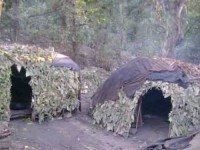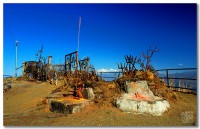Duna, Tapari and Bota, leaf plates in Nepal
Disposable multipurpose leaf plates and bowl going by the name of Tapari, Duna and Bota, are made by stitching the Sal leaves together with small bamboo sticks. Sal trees, found mostly in the Terai region of Nepal, are used for timber and fuel woods and its leaves are used for plates and animal feeds while its fruits and seeds have medicinal use in Ayurveda.
The plates and bowls of its fresh leaf are used for many purposes during various occasions including religious rituals, cultural and traditional practices and festivals while the dry leaf plates are used mostly for picnics, in restaurants, during parties in village and at the street food stalls. The fresh tapari, duna and bota are considered as pure and usable during the religious and cultural rituals especially while making offerings to the gods and goddess. It is also used while giving sida (donation of a combination of various ingredients that are commonly used for making bhat, daal and tarkari made to the family priest). The dried plates and bowls are used as they are easy to dispose of and also do not cause any adverse effects to the environment.
The tapari is a slightly curved plate made by stitching several Sal leaves together with fine bamboo sticks called sinka. Giving it the shape of the tapari while the leaf is still green and fresh is easy as the fresh leaf is flexible and have a lot of moisture which makes it easy to twist, squeeze without the fear of breaking it. Duna is made usually by using a single Sal leaf that is stitched together into a small bowl. It is used during the puja for making small offering while Bota is a little bigger in size than the duna and is usually circular or rectangular which can easily hold semi-liquid objects. The dry botas are mostly used by the food stalls and some eateries to cater their cuisines as these are easily disposable.
It is said that Queen Maya Devi, mother of Gautam Buddha, gave birth to the Lord under a Sal tree or the Ashoka tree in the garden in Lumbini while she grasped its branch. Legend also has it that four pairs of Sal trees growing around Buddha’s bed had suddenly turned white when he had died. Also, most of the temples in the Kathmandu valley was made up of bricks and Sal tree wood which adds up to its religious significance.
These leaves are handpicked from the lower branches of the tree, however, some freshly fallen leaves are also collected from the ground. These leaves are sacked together and made into a bundle tying them to a thin bamboo rope before taking them to the market for sale.
For detailed information on duna, tapari and bota go to http://tasteofnepal.blogspot.com/2012/03/leaf-plates-of-nepal-tapari-duna-bota.html






